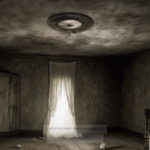Do Near-Death Experiences Provide Evidence of Consciousness After Clinical Death?
Do Near-Death Experiences Provide Evidence of Consciousness After Clinical Death?
The phenomenon of near-death experiences (NDEs) has captured the imagination of scientists, philosophers, and spiritual seekers alike. As individuals report encounters with bright lights, feelings of peace, and even out-of-body experiences during moments when they are clinically dead, the critical question arises: Do these experiences offer any evidence of consciousness persisting after death? This inquiry not only probes the boundaries of scientific understanding but also touches on the age-old question of what happens after we die. In this blog post, we will delve into the intricacies of NDEs, exploring historical contexts, core concepts, and the implications of ongoing research.
Historical Context of Near-Death Experiences
Near-death experiences have been documented throughout human history, appearing across cultures and religions. Ancient texts, such as the Tibetan Book of the Dead, describe similar states of consciousness during the transition from life to death. In more contemporary times, the term “near-death experience” was popularized by Dr. Raymond Moody in his 1975 book “Life After Life,” where he compiled numerous accounts from individuals who had come close to death. His work catalyzed a wave of interest in NDEs, prompting further research, including studies by Dr. Pim van Lommel and Dr. Sam Parnia, which sought to investigate the phenomenon through a scientific lens.
Core Concepts of Near-Death Experiences
NDEs often encompass various elements, including:
- Out-of-body experiences (OBEs): Individuals report a sense of floating above their physical body, often observing medical procedures from a distance.
- A tunnel experience: Many describe moving through a dark tunnel toward a bright light.
- Encountering deceased loved ones: Some individuals experience meetings with friends or family members who have passed away.
- A life review: This involves a rapid replay of significant life events, often accompanied by emotional insights.
- Feelings of peace: Many report a profound sense of calm and acceptance during the experience.
While the subjective nature of these experiences raises questions about their validity as evidence for consciousness after death, they are consistently reported across different demographics, suggesting a shared human experience that transcends cultural boundaries.
Scientific Investigations and Evidence
Scientific investigation into NDEs often involves a multidisciplinary approach, combining psychology, neuroscience, and cardiology. One of the most compelling studies was conducted by Dr. Pim van Lommel, a Dutch cardiologist who followed patients who had experienced cardiac arrest. His findings indicated that a significant number of patients reported NDEs, and he argued that these experiences could not be attributed solely to brain activity or oxygen deprivation during near-death states.
Key Findings from Research:
- About 10-20% of cardiac arrest survivors report NDEs.
- Many NDEs involve vivid sensory experiences that defy scientific explanation.
- Individuals often exhibit transformative changes in their attitudes and beliefs post-experience.
Additionally, the AWARE (AWAreness during REsuscitation) study, led by Dr. Sam Parnia, aimed to test the hypothesis regarding consciousness during cardiac arrest. This study involved placing visual stimuli in the operating room that patients would only see if they had an OBE. The results indicated that while many patients reported NDEs, none could recall the visual stimuli, raising questions about the veracity of OBEs as evidence for consciousness existing outside the physical body.
Practical Implications of NDE Research
The implications of NDE research extend beyond the academic realm, influencing fields like healthcare, psychology, and spirituality. For healthcare professionals, understanding NDEs can foster a compassionate approach to end-of-life care. Recognizing that patients may have profound experiences during critical moments can lead to more empathetic communication and support for both patients and their families.
Furthermore, NDEs challenge conventional views of consciousness and death, prompting discussions about the nature of reality and the potential for an afterlife. These discussions have implications for mental health professionals as well, as individuals who experience NDEs may require support in integrating their experiences into their lives.
Alternative Perspectives on NDEs
While many view NDEs as evidence of consciousness after death, there are alternative perspectives. Critics argue that these experiences can be explained through physiological and psychological mechanisms. For instance, some researchers suggest that the brain may produce vivid hallucinations in response to trauma, lack of oxygen, or the release of endorphins during near-death states.
Additionally, skeptics point out that cultural influences play a significant role in shaping the content of NDEs. For example, individuals from different cultural backgrounds may describe their experiences in ways consistent with their religious beliefs. This raises the question: Are NDEs a universal phenomenon, or are they heavily influenced by individual and cultural contexts?
Common Misconceptions and Clarifications
There are several misconceptions surrounding NDEs that warrant clarification:
- Misconception 1: NDEs are always positive experiences. While many report feelings of peace, others describe distressing encounters.
- Misconception 2: NDEs confirm a specific religious belief. NDEs can occur across various belief systems, and the content often aligns with personal or cultural contexts.
- Misconception 3: All NDEs are the same. Accounts vary widely, with some experiencing profound transformations, while others report mundane sensations.
Notable Facts:
- NDEs have been reported by individuals of all ages, including children.
- Some individuals experience “shared NDEs,” where multiple people have similar experiences during a traumatic event.
Best Practices for Investigating NDEs
For those interested in exploring NDEs further, there are several best practices to consider:
- Engage with credible research: Familiarize yourself with peer-reviewed studies and findings from reputable sources.
- Maintain an open mind: Approach the topic with curiosity, acknowledging both scientific and anecdotal evidence.
- Respect personal narratives: Understand that individuals’ experiences are deeply personal and may not conform to established theories.
Furthermore, attending conferences, reading books by experts in the field, and participating in discussions can enrich your understanding of NDEs and their implications.
Future Developments and Ongoing Research
The investigation into NDEs is far from complete, and ongoing research continues to unveil new insights. Projects like the AWARE study are paving the way for more comprehensive understandings of consciousness during critical medical events. Additionally, advancements in neuroimaging technology may soon allow researchers to monitor brain activity during near-death states, providing a clearer picture of what happens in the mind during these experiences.
Moreover, the intersection of science and spirituality remains a rich field for exploration. As societal attitudes shift toward a more nuanced understanding of consciousness, further interdisciplinary collaboration between scientists, philosophers, and spiritual leaders may illuminate new pathways for understanding life, death, and everything in between.
Conclusion: The Quest for Understanding Consciousness Beyond Death
The question of whether near-death experiences provide evidence of consciousness after clinical death remains a captivating mystery that straddles the line between science and spirituality. While numerous accounts and studies suggest the possibility of consciousness persisting beyond physical existence, alternative explanations also challenge these findings. As research continues and societal attitudes evolve, the exploration of NDEs will undoubtedly expand, inviting deeper inquiries into the nature of reality and the human experience.
Ultimately, whether one interprets NDEs as evidence of an afterlife or as complex psychological phenomena, they serve as a reminder of the profound mysteries that lie at the intersection of life and death—a reminder that the quest for understanding may be as significant as the answers we seek.
Other Articles
Recent Posts
- What Happened to Flight MH370? The Conspiracy Theories That Still Haunt Us
- What Secrets Lurk Within the Walls of the Infamous Trans-Allegheny Lunatic Asylum?
- What Evidence Supports the Existence of Bigfoot in the Pacific Northwest?
- What Happened to the Indus Valley Civilization? Unraveling the Mysteries of Ancient Urban Life
- Can Telepathy Be Scientifically Proven Through Laboratory Evidence?







